The PIE BIRD
The Darling of Pie-Baking
A pie bird, also known as a pie vent, pie whistle, pie funnel, or pie chimney is a hollow ceramic device, that originated in Europe around the 1700s. It can be shaped like a funnel, chimney, or an up-stretched bird with open beak. The pie bird is an old-timey device used for supporting or venting a pie. It's quaint and charming, and making a come-back in the world of pie baking.
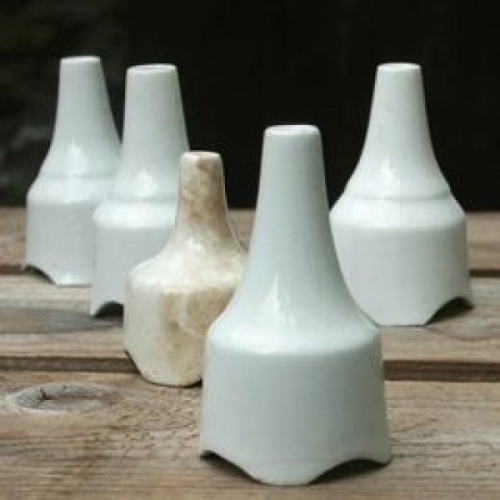
Just for fun, here's a little history: Funnel-style steam vents have been placed in the center of fruit and meat pies during cooking since Victorian times. Because older ovens had more problems with uniform heating, pie filling would often boil over and create a not-so-lovely pie. And of course, the filling burning on the bottom of the oven created a stinky and time-consuming mess.
So innovative cooks found that by venting the built-up steam during baking, the pie's contents didn't boil over and seep between the two crusts. The appearance of the pie was more pleasing, and there was less to no clean-up on the bottom of the oven after baking. Soon, every cook and chef was using a pie vent.
Though English bakers started using workmanlike ceramic funnels for this purpose in the early 1800s, this useful baking tool didn't take on fanciful bird form until migrating to the United States in the 1930s. The inspiration for the bird form? The nursery rhyme "Sing a Song of Sixpence." As you'll remember, it makes reference to "four and twenty blackbirds baked in a pie..." and historian believe that reference was the reason the traditional pie vent went from a funnel shape to the design of a bird.
This handy device was also used to support the pastry crust in the center of the pie, so that it did not sag in the middle. As a result of this use, pie birds were occasionally known as "crust-holders."
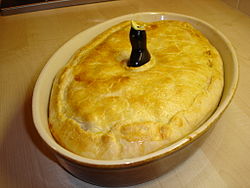
To use a pie bird, a cook rolls out the bottom layer of pastry for a pie, presses it into the pie pan, and then gently places the pie bird in the middle of the crust. Pie filling is then placed around the pie bird. The top layer of crust is rolled out and an X, slightly smaller than the girth of the bird, is cut into the crust. Then the crust is carefully lowered over the device and the filling. The top of the pie bird projects from the pie, allowing steam to escape, while the rest of the body remains buried in the filling.
When a pie has a bird inserted, the upper crust doesn't need any other treatment for steam-escape, such as the piercing usually done. Some people prefer this unbroken, smooth look, as it looks neater when presented on the plate. Some cooks also like the look of a whole pie served with a pie bird—its old-fashioned look creates a warm ambiance to a meal.
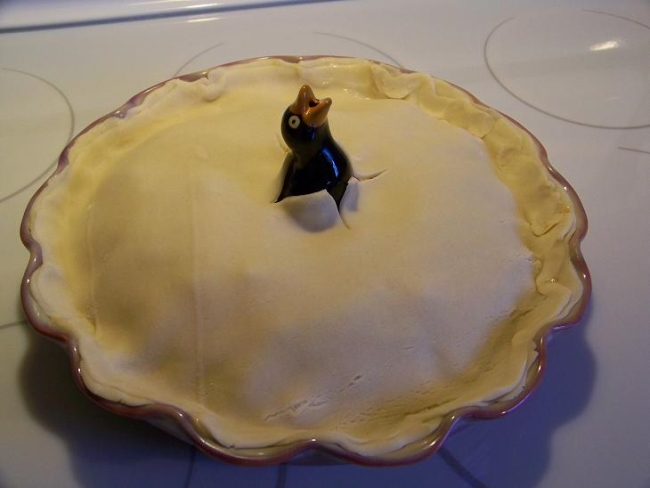
The pie bird has traditionally been made of ceramic and from the 1940s they have been produced in a multitude of designs. Bakers are rediscovering their usefulness and now due to their increasing popularity as gifts and collectors' items (rather than simply utilitarian kitchen tools) they're being manufactured again.
Pyrex even got into the act, making these clear glass versions. But they didn't sell as well as their more charming bird and figure-shaped counterparts.
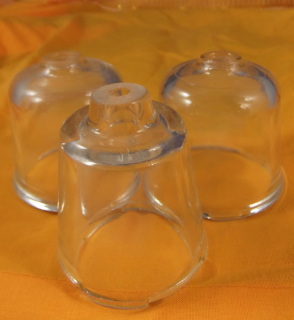
And other designs were fashioned after fruit, animals, chefs, and even famous characters from advertising, such as Aunt Jemima.
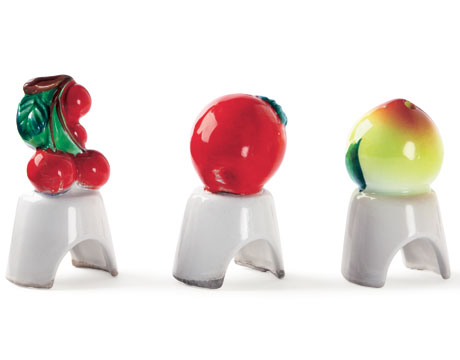
If you're interested in the more old-timey, vintage birds, it's easy to start collecting them. They're all over ebay and amazon.com. For instance, these charming vintage blackbirds, dating to the 1960s, represent the classic style of figural pie birds and run $10 to $20 each. Today, fans of the figurals drop anywhere from $10 to $3,000 for avian as well as other, rarer shapes. The pie bird-collecting community welcomes newbies—and will help you track down pie birds through a mailing list of shows (e-mail qps1@earthlink.net).
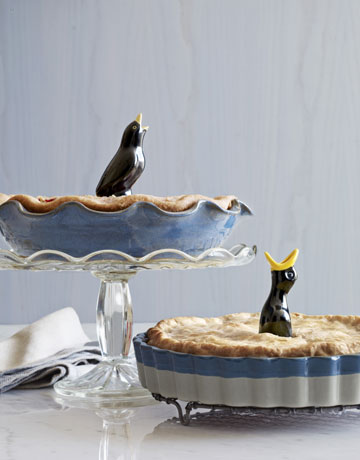
But my favorite site for finding pie birds is www.piebird.net. The owner of the site, Kathy Lye, has been collecting these for over 20 years. Her prices are reasonable and her service is great. Here's a simple bird that sells for $10, for example. The site says it gets new stock almost daily, and she also produces personalized pie birds (she suggests visiting her contact page to arrange for this).
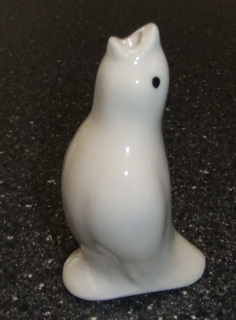
In closing, here's a 75-year-old pie bird I inherited from my Aunt Annie. It's been fun to use this sweet heirloom and it's been such a pleasure seeing the delight this special touch brings to the family when we're gathered for a meal. I use her often—she really is the darling of our pie-baking!
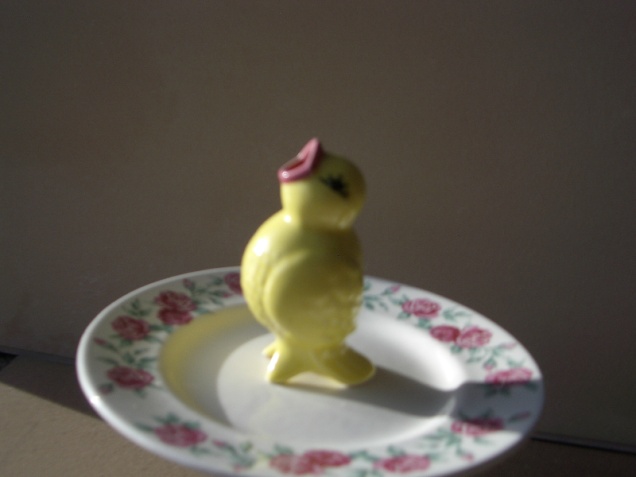
- www.willowandstone.co.uk
- www.wikipedia.org
- www.gaylemckay.wordpress.com
- www.piebird.net
- www.nothinginthehouse.com
 Alice Osborne
Alice Osborne
Weekly Newsletter Contributor since 2006
Email the author! alice@dvo.com
